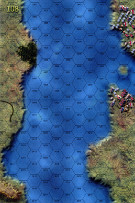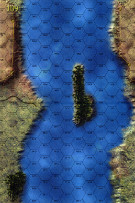Errors? Omissions? Report them!
|
South of Budapest River Battleships #16 |
||
|---|---|---|
|
(Attacker)
Germany
(Attacker) Hungary |
vs | Soviet Union (Attacker) |
| Formations Involved |
|---|

| Total | |
|---|---|
| Side 1 | 0 |
| Draw | 0 |
| Side 2 | 0 |
| Overall Rating, 0 votes |
|---|
|
0
|
| Scenario Rank: of |
| Parent Game | River Battleships |
|---|---|
| Historicity | Alt-History |
| Date | 1944-11-01 |
| Start Time | 00:00 |
| Turn Count | 24 |
| Visibility | Night |
| Counters | 14 |
| Net Morale | 1 |
| Net Initiative | 0 |
| Maps | 2: 108, 109 |
| Layout Dimensions | 86 x 28 cm 34 x 11 in |
| Play Bounty | 215 |
| AAR Bounty | 227 |
| Total Plays | 0 |
| Total AARs | 0 |
| Battle Types |
|---|
| Delaying Action |
| Exit the Battle Area |
| Inflict Enemy Casualties |
| Meeting Engagement |
| River Control |
| Prisoner Capture |
| Scenario Requirements & Playability | |
|---|---|
| River Battleships | Base Game |
| Introduction |
|---|
|
The Hungarian Danube Flotilla committed its small gunboats to offer fire support to the defenders of Budapest, and the lone German river monitor joined them. The Soviets did not challenge them, but had they done so, the small Axis flotilla would have been at a serious disadvantage. |
| Conclusion |
|---|
|
The German monitor Bechlaren would actually attack and sink two Soviet armored cutters in the war’s last weeks, but no large-scale fighting took place on the river. The Hungarian gunboat Debrecen was lost in late November in a shootout with Soviet T-34 tanks, but the Soviet monitors did not attempt to intervene at Budapest. They did appear at Vienna in 1945, providing fire support from the Danube during the Soviet capture of the Austrian capital. |
Display Relevant AFV Rules
| AFV Rules Pertaining to this Scenario's Order of Battle |
|---|
|
Display Order of Battle
Errors? Omissions? Report them!

 RiBa015
RiBa015 












